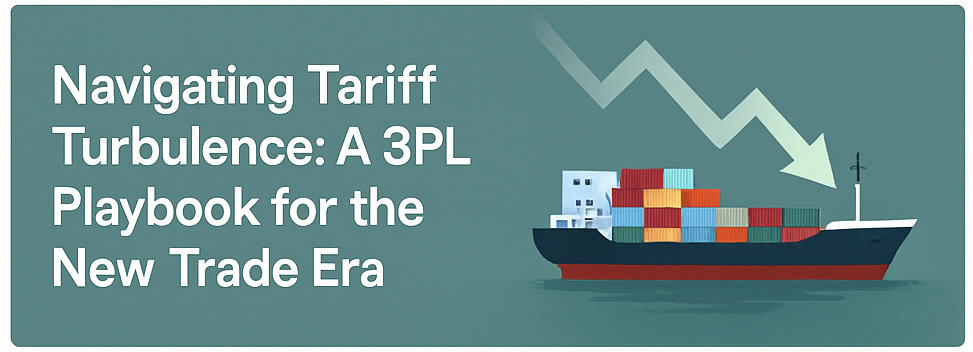3PL Challenges
Navigating Tariff Turbulence for 3PLs


April 2025 has marked a seismic shift in global trade policy. With sweeping tariffs now in place—including a 10% baseline across nearly all imports and sharply elevated duties on specific countries like China (54%) and Vietnam (46%)—the logistics industry, especially third-party logistics providers (3PLs), finds itself at the center of the storm.
While the focus of headlines is on manufacturers and retailers, it’s the 3PLs—those managing warehousing, transportation, and fulfillment—that are now under acute pressure. Clients are looking to 3PLs not just as service providers but as strategic partners to help them weather rising costs, reroute supply chains, and stay ahead of cascading disruptions.
Here’s a breakdown of the challenges—and more importantly, the strategies—that 3PLs can adopt to thrive in this high-volatility era.
Margin Compression and Cost Complexity
Tariffs are directly raising the landed cost of goods, which pushes clients to negotiate harder on service rates. At the same time, 3PLs face rising internal costs—transportation, warehousing, and insurance are all under pressure due to global uncertainty.
Response:
3PLs need to shift from static costing models to dynamic, scenario-driven cost management. Integrating real-time data on commodity flows, fuel prices, and regulatory changes can allow 3PLs to offer predictive cost visibility and smarter client contracts that reflect true volatility.
Shifting Sourcing Patterns and Route Disruptions
Clients are rapidly adjusting sourcing strategies to avoid high-tariff regions. That means more products are coming from alternative countries—like India, Mexico, or parts of Eastern Europe—altering long-established transportation and distribution routes.
Response:
3PLs should invest in flexible route modeling and re-optimization tools. Being able to simulate multiple transport and fulfillment strategies will be key. This includes port-of-entry shifts, cross-docking opportunities, and multimodal transport networks that weren’t part of previous playbooks.
Inventory Rebalancing Pressure
Brands are now reassessing where and how much inventory to hold. Stockpiling in tariff-free zones, redistributing closer to demand centers, and creating just-in-case buffers are all strategies being explored.
Response:
This is where 3PLs can lean in as strategic advisors. Offering clients micro-fulfillment options, temporary warehousing, or hybrid hub-spoke models helps them stay agile. More importantly, warehouse-level visibility—SKU by SKU—becomes a competitive edge for both the 3PL and its clients.
Operational Complexity from Client Fragmentation
Different clients are reacting in different ways. Some are cutting volumes, others are rerouting entire supply chains overnight. The result is a sharp increase in exception handling, manual coordination, and ad-hoc client demands.
Response:
Operational resilience will require automation not just in warehousing or TMS platforms, but in business logic. 3PLs that can build adaptable workflows and rules-based automations into their control towers will handle this fragmentation better and scale faster.
The Rise of Strategic Partnerships
With clients under immense pressure, the old vendor-client relationship is evolving. Clients are now evaluating which 3PLs can truly help them adapt—not just move boxes.
Response:
This is the time for 3PLs to position themselves as intelligence partners. Offering data-backed recommendations, risk alerts, and scenario forecasts can deepen client trust and open new revenue opportunities in consulting, analytics, and technology integration.
Final Thoughts: Turning Challenge into Opportunity
The global tariff shift is not a passing storm—it’s the new climate. For 3PLs, this moment is a crucible. Those who adapt quickly, harness data, and align closely with their clients' strategic needs will not only retain business—they’ll grow it.
Supply chains are no longer just about efficiency. They are about adaptability. And in this new trade landscape, 3PLs are positioned to lead the charge in making supply chains smarter, faster, and more resilient.

